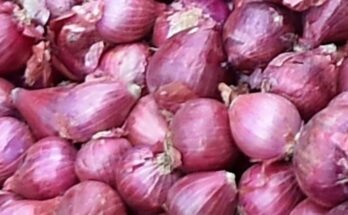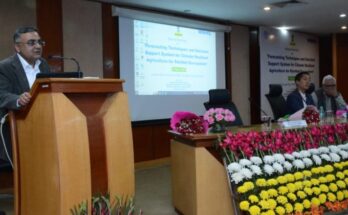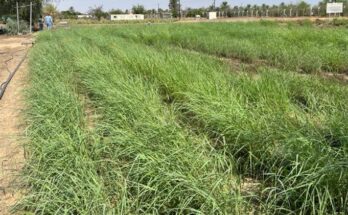Highlighting the benefits of maize in ethanol blending, Abdul Sattar, Minister of Agriculture, Government of Maharashtra invited the private sector to come forward and set up the blending process in the state. “The state government will provide all necessary support to the industry along with providing financial support and connecting with the farmers. Through this process we can also increase farmers’ income by increasing the maize production,” he said while speaking at ‘India Maize Summit 2023’, organised by FICCI in New Delhi today.
Addressing the 9th edition of the Summit, Sattar further said that maize is a safe and secure crop since it is less perishable as compared to other crops. “We must work to motivate farmers to move towards maize production,” he emphasised. Sattar also highlighted the need to work together to create a system for maize storage and stocking. The role of industry, government and other agencies will be key in this, he noted.
Maharashtra government is committed to supporting the industry coming forward to support the farmers’ welfare and agricultural sector, the minister added.
Speaking at the FICCI Maize Summit, Manoj Ahuja, Secretary, Department of Agriculture and Farmers Welfare, Govt of India emphasised that the agriculture sector is growing at a fast pace, and we need to have frameworks to strengthen the ecosystem in the agriculture sector. “We need to have workable frameworks in which we can work together in a collaborative and easy manner. It will bring more ease of doing business, certainty, clarity and transparency while working with the government,” he added.
You may also like to read – FAO Initiative: Sustaining smallholder farming with millet cultivation in India
He also said that the government is devising a model for the development of the agriculture sector under the PPP mode. It will allow the private sector to work with the government for the benefit of the farmers. “Due to the increasing demand coming in the maize sector in coming years, we would require a quantum jump in our production to the level of 40-45 million tonnes in the next 4-5 years. We also need to systematically understand the wastage and losses in the entire value chain and solve it,” added Ahuja.
TR Kesavan, Chairman, FICCI National Agriculture Committee & Group President, TAFE said that we must look at establishing Centre of Excellence for mechanisation in the agriculture sector which will be crucial for India.
Anuja Kadian, Government & Industry Affairs Director, Asia Pacific, Corteva Agriscience said while speaking at Maize Summit that a sustainable roadmap to strengthen the maize value chain needs a holistic approach and is the need of the hour. The adoption of new seed technologies by farmers will take Indian maize to next level. She also highlighted that a multi-stakeholder approach with the coming together of policymakers, research institutions and the private sector to develop a strong foundation to meet the future demand of maize is imperative.
Sunjay Vuppuluri, Head-Food & Agribusiness Strategic Advisory & Research Segment, Yes Bank shared the insights on FICCI-Yes Bank knowledge report. He highlighted that for India to meet the growing demand for maize and remain competitive in the global market, it is essential to promote innovative technologies and practices across the maize ecosystem. Pravesh Sharma, Chairman, FICCI Taskforce on FPOs and Director, Samunnati delivered the vote of thanks.
You may also like to read: DSM inaugurates fortified rice kernel manufacturing plant to serve India & South Asia
During the Maize Summit, the FICCI-Yes Bank knowledge report – ‘Transforming India’s Maize Sector: The Critical Role of Technology and Innovations’, was released.
Key highlights of the report
Globally, 1.21 billion million metric tonnes of maize was produced across 205.87 million hectares in 2021. USA was the largest producer of maize contributing to about 32 per cent of global production, followed by China (23 per cent), Brazil (7 per cent), Argentina (5 per cent) and Ukraine (3 per cent). These five countries contribute 70 per cent of the global maize production. India ranked 4th and 6th in terms of global maize acreage and production, contributing to about 3.96 per cent and 2.13 per cent respectively.
In the year 2021, international trading of maize reached approximately USD 52 billion across 155 countries. Most of the global export value came from the top five maize exporting nations, which accounted for about 77 per cent of total exports. The leading exporters were USA (37 per cent), Argentina (17 per cent), Ukraine (11 per cent), Brazil (8 per cent) and France (4 per cent).
In the year 2021, India imported roughly about 24,000 MT of maize worth USD 14.20 million, while the country’s maize exports amounted to 3.62 million MT valued at about USD 935.61 million, a 2.4X increase in export value over the previous year. This significant rise in exports was driven by surging maize prices across the globe, which made Indian maize prices more competitive in the international markets. In addition, the demand resurgence in the South and Southeast Asian countries (for example Bangladesh, Vietnam, Malaysia) and lower supply from traditional regions of Argentina and Brazil amid bad weather conditions further boosted maize exports.
Despite significant growth in production, the productivity of maize in India (3.07 MT/Ha) is still far lower than that of other major maize-growing nations such as USA (10.51 MT/Ha) and Argentina (7.86 MT/Ha). It is likely that this productivity gap is due to the limited adoption of technological advancements across the maize supply chain. Historically, conservation agriculture practices have been successfully employed in Indian maize-based cropping systems to maintain productivity and profitability. However, to keep up with future demand and remain competitive in the global market, it is essential to implement modern technology-driven practices throughout the entire maize supply chain.
You may also like to read – PANI, Dvara E-Registry partner to make FPO digital platform accessible to small and marginal farmers
The Government of India, along with state governments, has taken numerous proactive steps to promote the adoption of modern technology and innovations in the agriculture sector. The government has introduced various developmental initiatives and schemes that have a direct bearing on the rate of introduction and adoption of innovative technologies in agriculture. Such initiatives include the National Food Security Mission (NFSM), the National Livestock Mission, National Project on Soil Health and Fertility, e-National Agriculture Markets (e-NAM), National e-Governance Plan in Agriculture (NeFP-A), PM-KUSUM, the promotion of agritech startups, promotion of digital extension services and investing on Agri-Stack.
In addition to these initiatives, the Government has launched the Digital Agriculture Mission 2021-25 to promote the use of digital technologies in agriculture. The mission aims to cover one million villages across India, providing farmers with real-time market information, enabling direct market linkage and facilitating e-commerce platforms for agricultural products.
To ensure that maize technology interventions are being leveraged to their fullest potential, it is necessary for all stakeholders, including policymakers, researchers and the private sector to work collaboratively. This report identifies five distinct action areas for the identification, adoption and scaling of innovations and technologies. They include:
- Promoting public-private partnerships to leverage technologies
- Improving the adaptability of new technologies
- Devising effective extension programmes
- Building necessary connectivity infrastructure
- Developing an enabling regulatory environment for the introduction and adoption of new technologies





